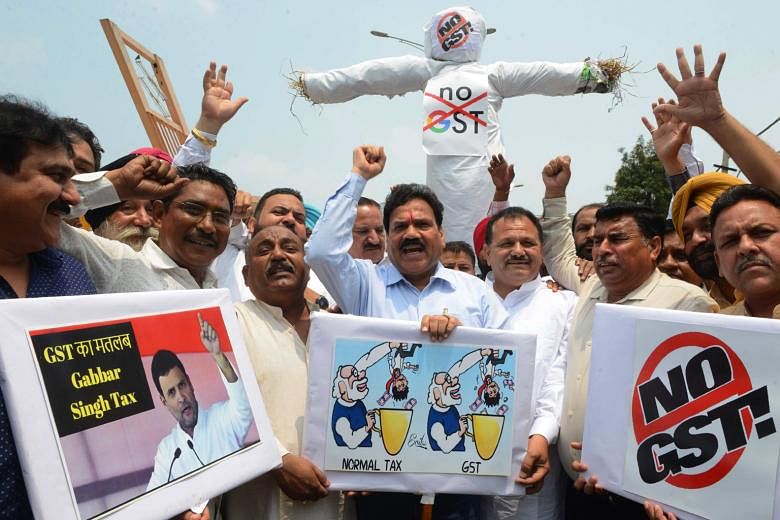At a business meeting last Friday, Mr Hasmukh Adhia, the most senior official in India's Finance Ministry, faced a grilling on the goods and services tax (GST).
Organised by the Federation of Indian Chambers of Commerce and Industry, the meeting with the Finance Secretary - equivalent to a permanent secretary in Singapore - was a clear indication of the confusion that still surrounds the GST a year after it was implemented.
It was one of the biggest reform measures undertaken since independence.
"This interaction is very useful as we come across all kinds of problems. All this gives greater amount of clarity," Mr Adhia told the The Straits Times.
The government has insisted that the GST has, among other things, led to a seamless flow of credit from the federal to state governments, allowed a freer movement of goods since online payments meant trucks no longer had to stop at state borders to physically pay taxes and widened the tax net.
The GST, implemented in July last year, replaced a labyrinth of 17 state and federal taxes and 33 different cess, with the revenue raised to be shared between the federal and state governments.
-
$147b
Amount of money made in first year of GST (2017-18).
4.5m
Number of new taxpayers added under GST.
70,000
Number of outreach programmes on GST across India
organised by the government.
But India's version, unlike Singapore's, does not have one tax rate but six slabs - 5, 12, 18 and 28 per cent, as well as 0.25 per cent for precious stones and 3 per cent for gold. The first four were worked out as a political compromise and the remaining two were added during reviews of the rates.
While there is unanimity that the GST is a much-needed reform in India, its implementation has been found to be wanting.
In a country that prides itself on its software engineering prowess, for instance, there have been glitches in the IT network supporting the tax. Additionally, the six different slabs have made India's GST one of the most complicated single tax in the world, with taxpayers having to file multiple returns. Delays in getting refunds have also hit exporters and small-and medium-scale industries, which claim they are facing a working capital crunch.
Mr Amit Sancheti, who runs a leather shoe manufacturing business, is among those unhappy with the implementation of the tax.
"It's been a year but I am not getting refunds. I sell my footwear at a tax of 5 per cent and buy raw material at 18 per cent. I am owed a refund of credit every month but that hasn't happened for a year," he said.
"My working capital is blocked. I have to take loans from outside. The situation is really bad."
India is notorious for its bureaucratic red tape and most analysts agree that the GST ought to be simplified further.
"GST one year on is very complicated and has undergone 400 changes. The GST was marketed as one nation, one tax. But that has clearly not turned out to be the case. Businesses with presence in one or more states need multiple GST numbers," said Mr Rishi Sahai, managing director of investment bank Cogence Advisors.
He added that the government needs to reduce the number of tax slabs to two and simplify the system for filing returns.
The government, although agreeing that the tax needed to be rationalised, has ruled out any immediate changes.

